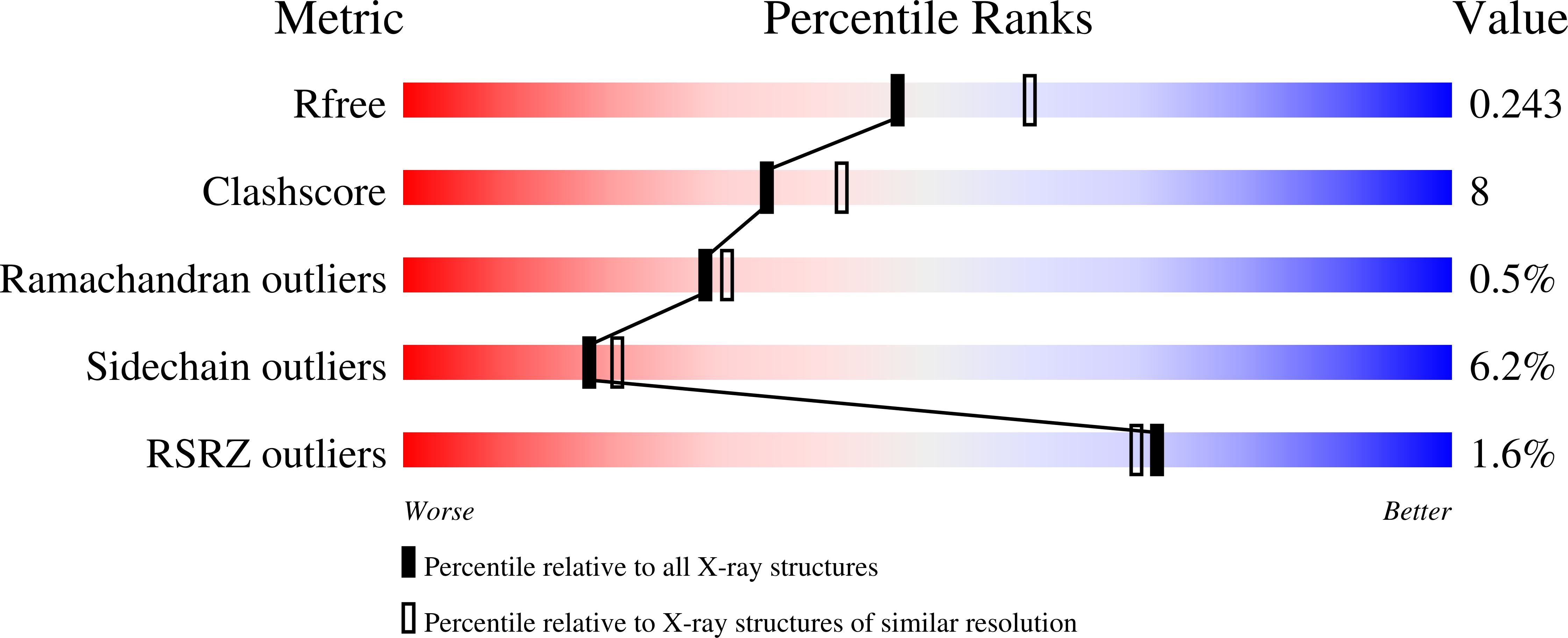Crystal Structure of the Pyrazinamidase of Mycobacterium tuberculosis: Insights into Natural and Acquired Resistance to Pyrazinamide.
Petrella, S., Gelus-Ziental, N., Maudry, A., Laurans, C., Boudjelloul, R., Sougakoff, W.(2011) PLoS One 6: e15785-e15785
- PubMed: 21283666
- DOI: https://doi.org/10.1371/journal.pone.0015785
- Primary Citation of Related Structures:
3PL1 - PubMed Abstract:
Pyrazinamidase (PncA) activates the first-line antituberculous drug pyrazinamide into pyrazinoic acid. The crystal structure of the Mycobacterium tuberculosis PncA protein has been determined, showing significant differences in the substrate binding cavity when compared to the pyrazinamidases from Pyrococcus horikoshii and Acinetobacter baumanii. In M. tuberculosis, this region was found to hold a Fe(2+) ion coordinated by one aspartate and three histidines, one of them corresponding to His57 which is replaced by Asp in Mycobacterium bovis, a species naturally resistant to pyrazinamide. The binding cavity also contains a Cys138-Asp8-Lys96 motif evocating a cysteine-based catalytic mechanism. Mutants have been constructed and investigated by kinetic and thermal shift assays, highlighting the importance of protein folding and thermal stability in the pyrazinamidase activity.
Organizational Affiliation:
Faculté de Médecine Pitié-Salpêtrière, UPMC Université Paris 6, ER 5, EA1541, Bactériologie-Hygiène, Paris, France.















